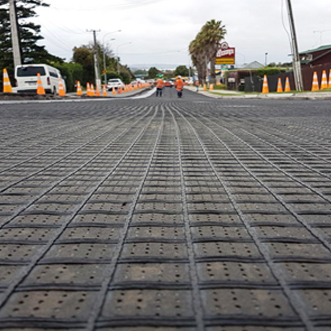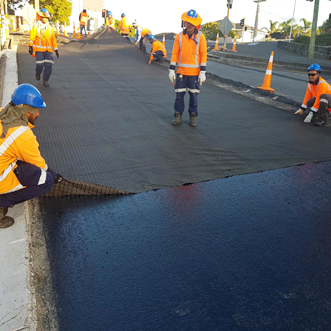Asphalt is one of the most commonly used materials for the surfacing of roads and airport runways, taxiways as well as other trafficked structures such as car parks and distribution centres.
The low tensile strength of asphalt means it can be easily damaged by a number of factors including settlement, fatigue, temperature fluctuations and vehicle loadings. Damage arising from reflective cracking usually manifests as a cracked or broken surface which has implications both for the comfort of the road user, vehicle damage and also to the subsequent on-going maintenance costs to the operator of the paved area. The ABG range of asphalt reinforcement grids offer systems designed specifically to mitigate these issues, offering increased life cycles for the pavement and a reduction in both new build and on-going maintenance costs.
Thus during the period between the end of construction and consolidation of the foundation, the fundamental strength requirement of the reinforcement should be that at any instant in time the factored reinforcement design strength equals or exceeds the design load. The use of geosynthetics offer many benefits over the traditional methods of construction which they replace including reduced construction times, and thereby, project costs. By allowing thinner pavements to be designed they help minimise the environmental impact of the project by reducing the volume of materials used thereby reducing the transport loads both to and from the site


